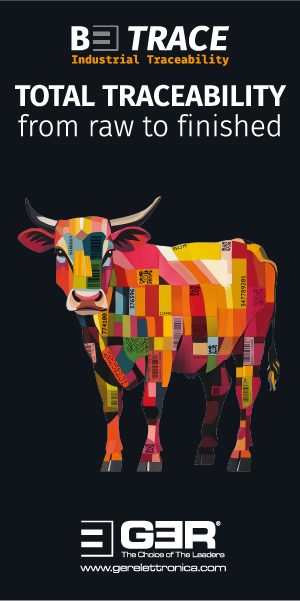Market Intelligence - 17.08.21
Macroeconomics
Despite the holiday season, the flow of information from politics and the economy remains relatively high. A lot is happening, even if it does not always directly affect the markets we are looking at.
With regard to Afghanistan, we should not forget why Western troops were sent there. It was thought to be beneficial to the security of many countries around the world for them to go. It is frightening that everything that has been achieved in terms of freedom there in recent years may now be lost again within weeks. We can only hope that this will not result in renewed global insecurity in the years to come.
In China and its spheres of influence, measures against any kind of criticism of the government will continue to be tightened. From court rulings in Hong Kong, to rulings against Canadian citizens in China, to measures against tech companies, to the ongoing strict measures on covid-19 outbreaks, the strength of the government is being demonstrated again and again; no doubt or criticism is allowed.
The pandemic continues to be a determining factor for politics and the economy. The world community has not managed to agree on a unified strategy of action and therefore national decisions and measures continue to diverge according to the ideas of the political leadership in different countries. From extreme relaxation to extreme restrictions, the whole spectrum of possibilities is covered. The virus, on the other hand, knows no boundaries.
It is all the more astonishing that the international financial markets, led by the stock markets, remain completely unmoved by possible risks and problems. The leading stock indices, with the exception of China, continue to rush from record to record. Companies are reporting extremely successful quarters, profits are rising again and the end of the money glut is being pushed back further and further by the national banks. Property markets are following the same path and in many countries property prices are also at record levels. Nobody ever called a bubble a bubble when it was there. That only happens when the bubble bursts. At the moment it seems that everyone knows that this will happen at some point, but prefers not to think about it for now.
Oil prices have been moving back and forth somewhat frantically but are now at the level of around $70 per barrel.
The fact that investors feel relatively safe can perhaps also be seen in the price of gold, which, despite all the possible risks, has not profited. The price of the troy ounce sank again to levels below $1,800 and continues to move sideways.
The US dollar was able to strengthen in the meantime after labour market data turned out better than feared. The dollar rose to levels of $1.17 to the euro before falling back about a cent.
Leather Pipeline
At the moment, there is little new impetus in the market from which insights can be gained.
In recent weeks, various colleagues have adopted a positive attitude in expectation of what will happen after the summer holidays. They may be influenced by the positive results of many companies from the first half of the year. They may also take low interest rates and further stimulus from governments as a basis for optimism. Some may just positive thinkers. It is certainly easier and more pleasant to think about the future positively than to confront possible difficulties.
We have outlined previously a broad spectrum of the possible risks that lie ahead. What has changed in the last two weeks to influence this?
First and foremost is the extreme uncertainty in the transport sector. In addition to a considerable increase in costs, supply continues to be extremely unstable. The Chinese government has completely closed the port in Ningbo because of one covid-19 case. Ningbo is China’s second-largest container port and it’s hard to imagine what impact this closure or a significant reduction in capacity there for several weeks might have on the entire maritime shipping industry. We have not yet managed to redress the difficulties and imbalances that arose last year to normalise the situation. Just like a one-week closure of the Suez Canal, a significant reduction in the capacity of the main port in southern China will show us how quickly and how big the problems can then become. Should the port in Ningbo be closed for a longer period of time, it is likely that many articles for the Christmas season will only reach their destinations with a long delay and perhaps not even on time.
Many Chinese companies are reporting difficulties in transporting their goods within China. The government’s zero-covid policy is causing massive difficulties in, for example, truck transport across provincial borders. Many truck drivers now refuse to travel longer distances across provincial borders, fearing that they will end up locked down somewhere and possibly unable to return home for weeks. This too could have a major global impact and one can sense great uncertainty in the communication with our Chinese sources. The recovery of the Chinese economy has been a success, but we realise now how quickly things can change.
With regard to the leather sector, our sources in China report increasing uncertainty about financing. This is largely because the transport delays have slowed down the flow of funds back into the supply chain. In addition, the Chinese government has said it does not intend to inject additional amounts of money into the system to avoid further large bubbles.
Observers expect China’s spectacular growth to slow down noticeably in the third quarter of this year. Whatever happens, past experience has shown that the Chinese economy reacts very sensitively to signals and we can clearly sense that enthusiasm in China is cooling noticeably at the moment.
The stockpiling and higher inventory levels, for safety reasons, have also been a notable driving force in the leather market. Of course, this increased stockpiling ought to be reflected in higher consumption. At the moment, however, it is the case that in many markets, the US in particular, consumption is increasingly shifting from goods to services again. If you look at consumption over the last 12 months, a large part of the losses in bricks-and-mortar retailing have been offset by massive growth in online business. There are quite a few who are firmly convinced that many products, such as furniture purchases, have been brought forward in the last 12 months and that a decline is, therefore, to be expected in the near future.
It is difficult at the moment to make a reliable analysis of the impact of the production shortfall. It is difficult to know the impact of the production losses in footwear in Vietnam and Indonesia. However, it can be said that production in these two countries is severely affected, and not just for a few days. In south-east Asia, covid cases have increased considerably and news and reports are reminiscent of the situation in India a few months ago. If this were to hamper production for a few weeks or even months, combined with the difficulties in transport, it is not completely unrealistic to assume that it would also affect the short- or medium-term consumption of leather. The biggest problem in this context remains the extremely scant information from the companies concerned; everyone is very careful with bad news these days.
August into September have always been very difficult time for analysis. The systems in many countries are shut down, people are busy with holidays, planning for the new season and the further away the production site is, the more important it is to secure deliveries to consumer markets.
All this will only pick up again in mid-September. The time will come when consumers in Europe and the US will start flocking back to the shops.
Another wild card in the discussion is inflation. Is it coming or not, and if so, according to which definitions? In the classical doctrine of inflation, people initially bring forward purchases in anticipation of further and sharply rising prices, thus further fuelling demand. This is then followed by wage increases and then ends in the classic wage-price spiral, which is difficult to stop again and is accompanied by the classic doctrine of raising interest rates to contain it.
People in the major economies today have had no real experience of inflation for decades and that is probably why their behaviour is not easily predictable. Economics is an empirical science and, therefore, the past is only partially reliable and models are only forecasts and not really reliable either. It is quite conceivable that rising prices will quickly dampen consumption because people are more than adequately stocked up on most things and therefore will only use their financial resources for real needs. That would certainly be a problem economically, but it would be welcomed by many for sustainability reasons. It would also serve as a convincing argument for the use of leather.
Overall, market activity has been rather subdued in the last two weeks. In Europe and America, this can be attributed to the summer holidays, but in Asia it has to do with the fact that uncertainty about future is increasing. If we only take the export statistics from the US as a basis, we can already see that it is being planned cautiously. The rising number of cases of covid-19 has also triggered a wait-and-see attitude in Asia. The problem remains, however, that timing is becoming more and more important owing to the delays in transportation.
We have very little news from the split market, either from Asia or from Europe. Prices for lime splits in China remain under pressure and in Europe there is no movement in the market that would have had any influence.
For sheepskin and lambskin, there are reports of good demand for light, raw material for double-face production. Prices have improved again, but this did not help the other commodity groups very much. The wool market has also stopped its steady increase in price for the time being. The same arguments apply here as we have already mentioned for hides and skins.
We assume that the next two weeks will be relatively uneventful. Only external influences from the financial markets or from politics could set the market in motion. Beyond that, a continuation of the wait-and-see approach is more likely. Towards the end of the month, a new trend will most likely emerge. At the moment, neither sellers nor buyers have a fundamental interest in significant market movements, because this would very likely lead to another rise in uncertainty.
As much as tanners would welcome low raw material prices, it would be highly unattractive in terms of timing if raw material prices were to fall in the short term before any discussion with customers. At the same time, although sellers would like to see prices rise further and further, they are also aware that this would probably lead to an even longer period of reduced buying activity. In this respect, strong price fluctuations in the coming weeks would be rather a surprise.
















